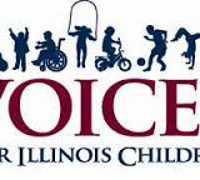Childhood poverty still growing; experts say budget cuts will worsen the problem
- Details
- Published on Thursday, 05 March 2015 17:07
- Written by Paul Gordon
Child poverty rates throughout Illinois, including the Peoria region, remain high despite the apparent economic recovery and proposed cuts in the state budget put those children at further risk of suffering the long-term consequences, according to local and state experts in child welfare.
Calling on Gov. Bruce Rauner and the Illinois General Assembly to find areas to cut in the budget with less impact on children in poverty, those experts said Thursday those consequences will range from health problems to education difficulties and homelessness and troubles with the law down the road. The issues were brought out during a news conference Thursday at Family House in Peoria at which Voices for Illinois Children revealed 2015 child poverty rates.
“We all recognize it is a complex problem. We need a comprehensive and sustained effort” to continue providing for children in poverty, said Trish Fox, executive director of The Center for Youth and Family Solutions.
According to the report Illinois Kids Count 2015: Confronting Poverty, Creating Opportunity,” childhood poverty in the state has grown so that more than one in five children live in households where the incomes are below the poverty level, which is $18,750 for a family of three. In 2013 the state childhood poverty rate was 21 percent, well above the rate of 14 percent recorded in 1999 and higher than pre-recession levels of 17 percent.
Locally, child poverty rates were 29 percent in Peoria County in 2012, the last year figures were available, well above the state rate of 21 percent. The Peoria County rate was 21 percent in 1999. Tazewell County’s childhood poverty rate rose from 8 percent in 1999 to 12.5 percent in 2012, while the Woodford County rate rose from 6 percent to 13 percent in the same time period.
Peoria County’s population of children in poverty rose by 34 percent from 1999 through 2012,, while the Tazewell County children in poverty population increased 62 percent and the Woodford population 127 percent.
Voices for Illinois Children reported that in 2011 the children in poverty in the Tri-County area were 47 percent white, 35 percent black and 8 percent Latino.
Fox said that while statistics show unemployment rates have improved in recent years, income has not kept up with inflation, forcing more families below the poverty line. She said there are proven strategies to help provide opportunities for families in poverty and they should not be allowed to be reduced or eliminated. Those include:
- Enhanced tax credits for low-income working family. In fact, she said, Voice for Illinois Children advocates increasing the earned income tax credit in Illinois from 10 percent to 20 percent of the federal credit to make it more effective.
- Food assistance programs should be strengthened and access to the Supplemental Nutrition Assistance Program (SNAP) improved.
- Progress made in expanding access to health care for low-income families must be sustained.
- Investments in early childhood education should be continued and not cut. Studies prove these programs work in preparing children for school and eventually for adulthood, she said.
“The best quote I found in the Kids County report is, ‘There’s no such thing as an undeserving 4-year-old.’ That is so true. As the report says, Illinois is at a crossroads,” Fox said.
Other experts on the panel explained the importance of state funding for the programs that help children and families living in poverty.
Laraine Bryson, president of the Tri-County Urban League, said the childcare center the league offers would have to close if its state funding is eliminated. That not only would put the children at further risk, it would put staff out of work and lead to other issues in a bad snowball effect.
Instead of cutting funding, subsidies should be enhanced to fund after-school programs that keep children engaged and out of trouble as well as nutrition programs to keep children healthy and jobs programs for families.
“If we want to turn things around, we need to increase resources, not eliminate them,” she said.
Tim Glancy of the Center for Youth and Family Solutions, said that agency teams with different foundations to fund programs for children, including a lunchbox program to make sure children in poverty receive proper nutrition. However, he said, there is only enough funding to help 115 children and many more are in need.
Jeff Turnbull, vice president of Family House, said the budget cuts, if approved would have a direct and daily impact on the people served at his agency. That includes the food bank, which has seen 86 percent growth in the number of people it helps in just the last two years.
“Because of the multiple challenges these children are facing, we need more services to affect positive change and provide a brighter future,” Turnbull said. “None of us should be accepting of a child going hungry every weekend because he can’t get food outside of school or a mother having to choose between buying medicine for a sick child or buying food for her entire family.”



















































